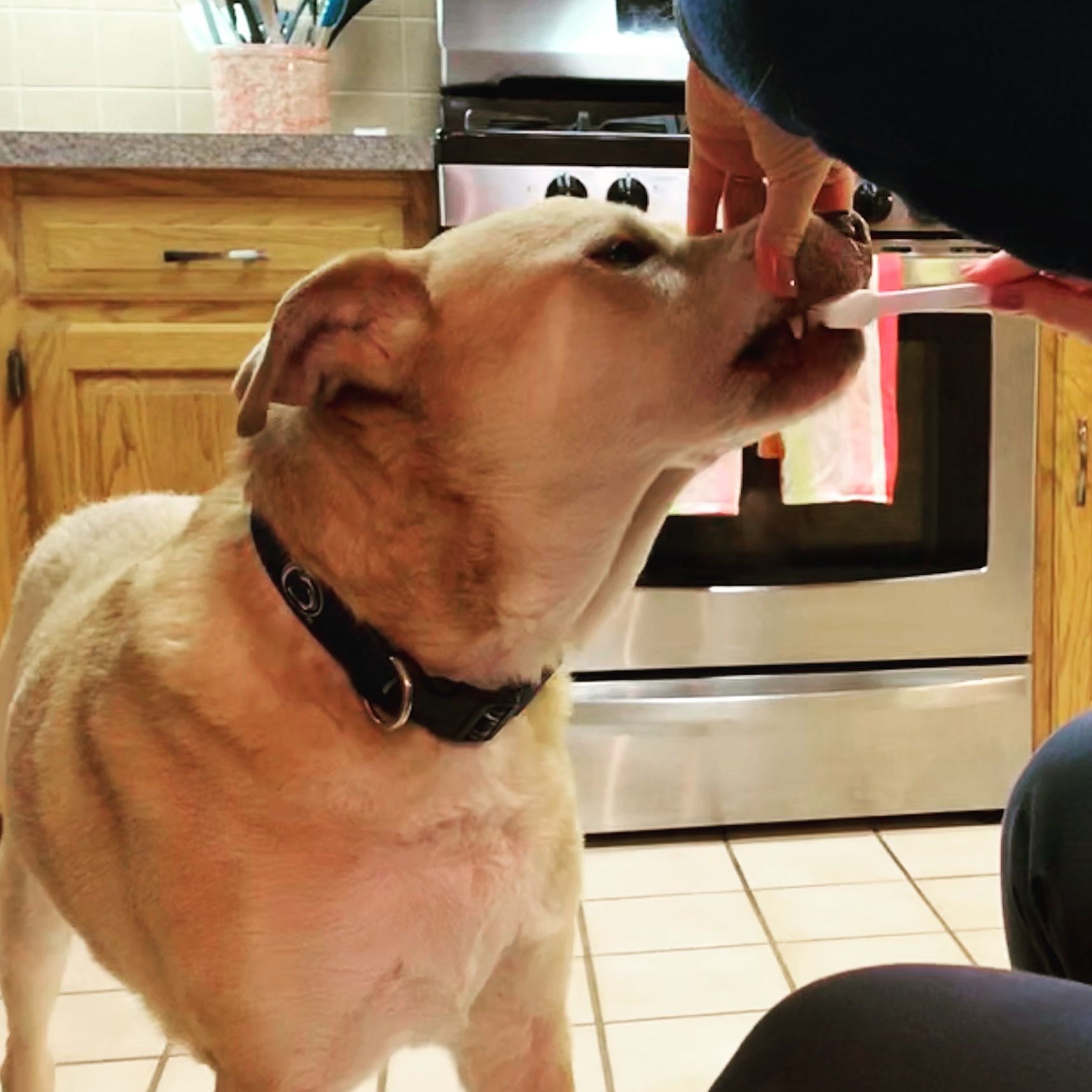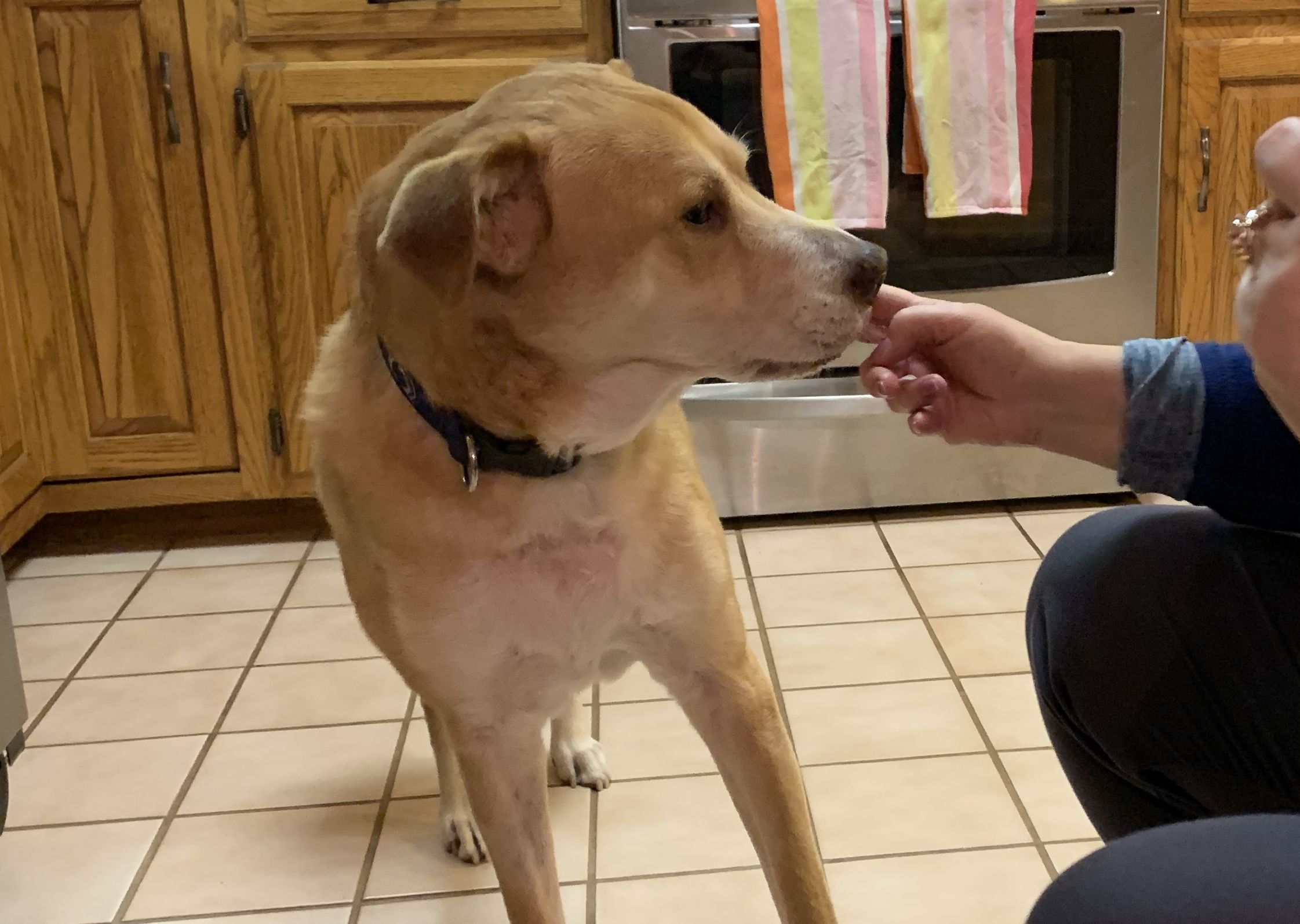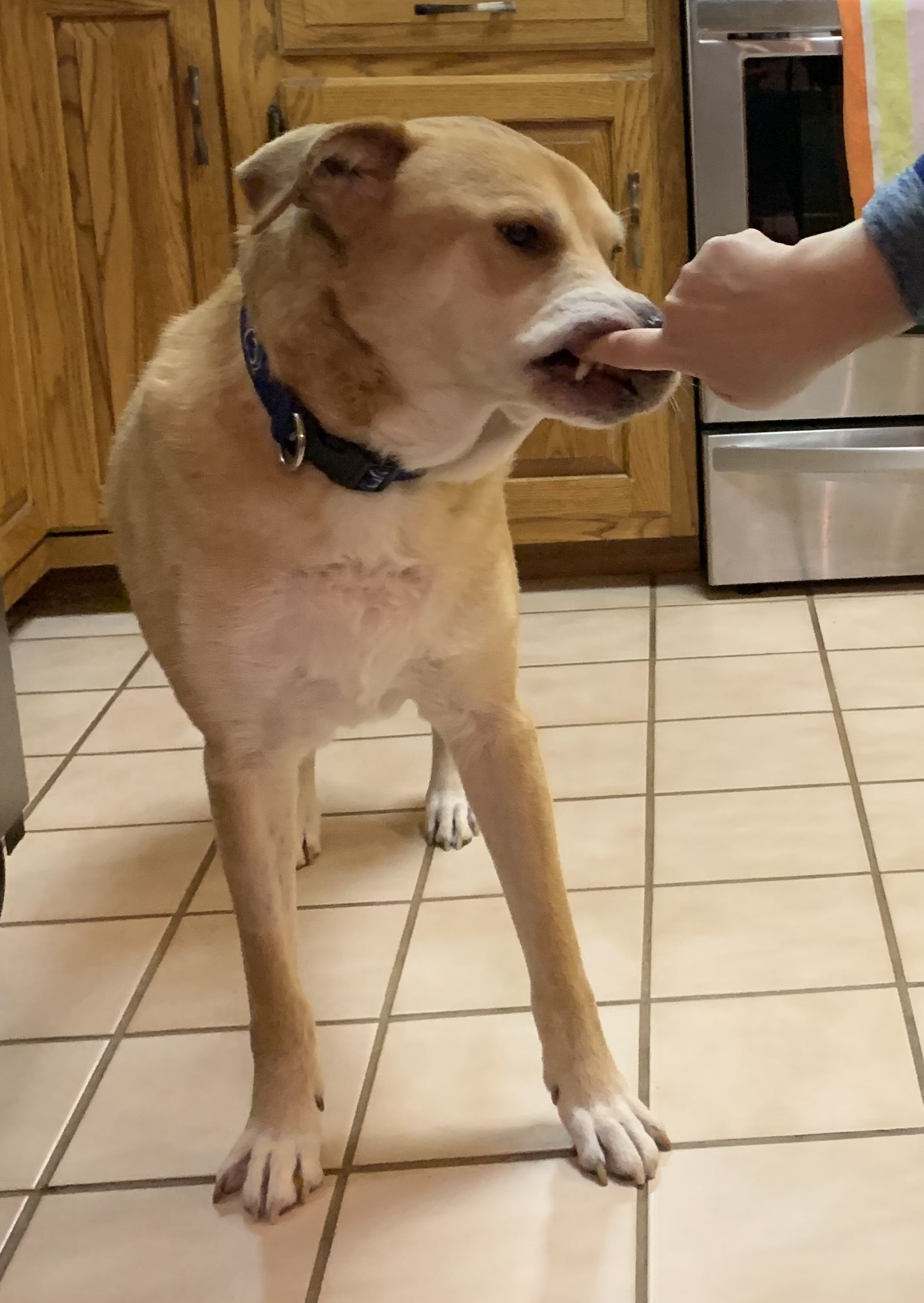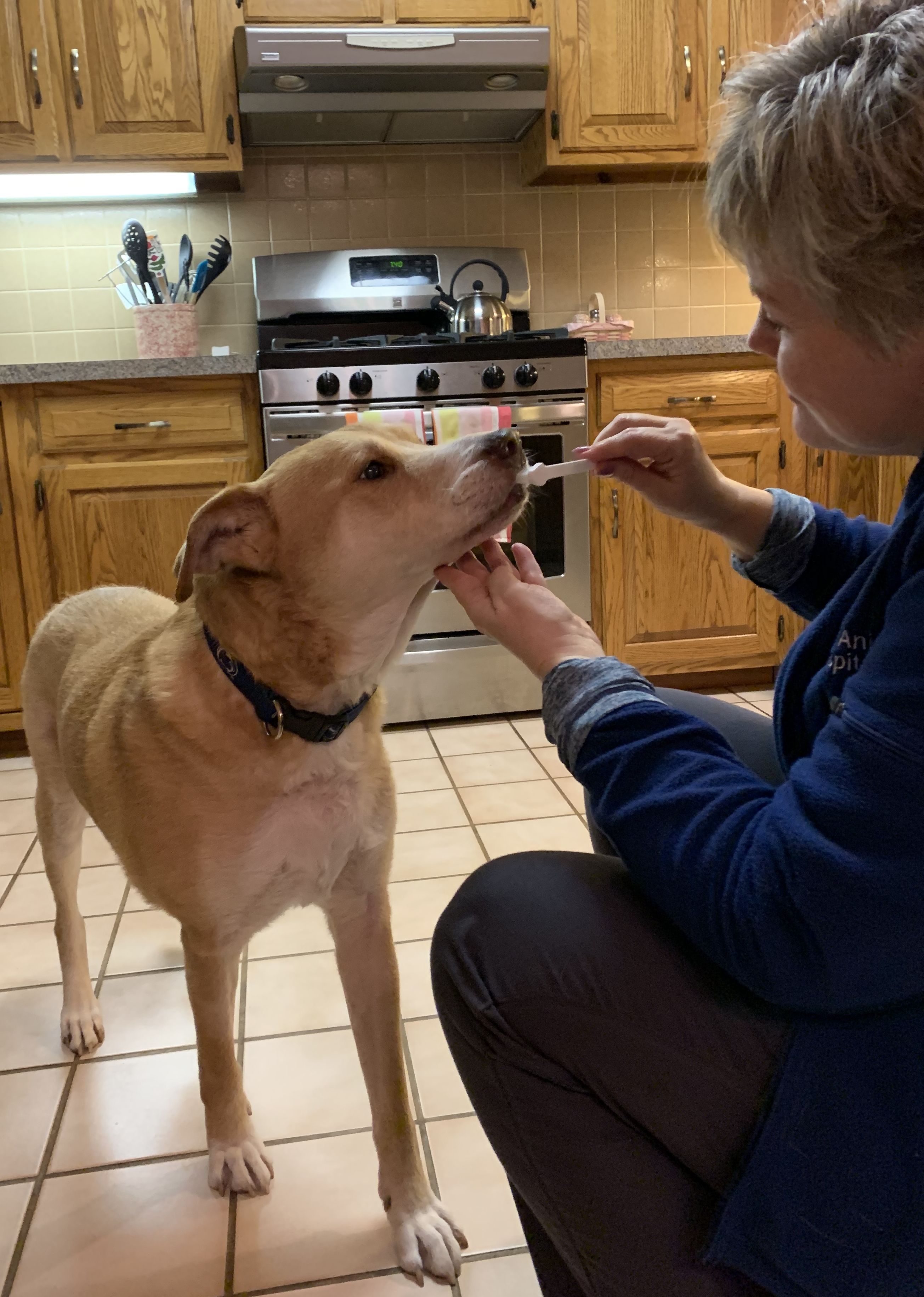February 27, 2019

WHY PET DENTAL CARE IS IMPORTANT
This month is National Pet Dental Health Month, and boy, has it been an eye-opener for me! As the team member who oversees posts to our facebook and Instagram accounts, I’ve had a crash course in pet dentistry in the past few weeks. TRUE CONFESSIONS: I’ve owned cats and dogs since I was a kid - 11 dogs and 12 cats in my adult life to date - and yet I’ve never really done any kind of long-term home dental care routine for a single one of them.
UNTIL NOW.
Shortly after I started researching all the pet dental information I wanted to share on our social media platforms, I realized that I have been doing a huge disservice to my furry family members. Sure, I take them to the vet every year. Of course I use flea-and-tick and heartworm protection products. Certainly I take them in when they appear ill or when I see a behavior change. And yeah, my pets get dentals every couple of years.
But I wasn’t doing a single stinkin’ thing about their teeth AT HOME. Even though my highly-trained, super-smart veterinarians, both here and in Savannah, Georgia where I recently lived for two years, told me to start at-home dental care, I WAS A SLACKER.
Since the beginning of February, that has changed. I have changed! Right now, I’m probably in “overkill mode,” trying a number of different products and approaches until I figure out what works best for my pets and my household. But I am determined to do a better job of caring for my pets’ mouths.
So... why? Why am I suddenly on the pet dental bandwagon? Because poor dental hygiene leads to bacteria in and around teeth and gums, and it gets PAINFUL really quickly. Quite honestly, I’m a little bit sick at heart to think about my pets of the past, and how much their mouths may have hurt without me recognizing it.
Here’s the thing: cats and dogs hide pain. Why? Dogs’ ancestors hid pain because showing weakness made them look vulnerable, and weak pack members were a liability. Expendable. Cats weren’t and still aren’t pack animals, but they also hid pain to keep from looking vulnerable and possibly becoming a meal for a bigger, stronger predator. We’ve changed a lot of genetic markers as we’ve domesticated our pets to modern-day canines and felines, but we haven’t changed that one simple fact: Dogs and cats still hide pain until they are so sick, they can’t.
You brush your teeth daily, right? And you do it because if you don’t (aside from that disgusting fuzzy feeling), you’ll get cavities and gum disease, and your mouth will hurt. And we won’t even talk about the cost to fix it…! But here’s the important take-away: our pets experience the same thing.
They break teeth and even knock them out. They get bacterial infections down under the gums that spread and cause bone loss and loose, painful teeth. They drool, they have terrible breath (which makes you want to back away when they’re dying to be snuggled!), and they may even get tongue inflammations and sore throats. They hurt, but they may hide it so well that you don’t even realize it. Is that what you want for your pets? Of course, it’s not! You’re reading this because you love your animals and you want to do right by them.
In addition to relief from pain, there are other good reasons to create a daily teeth cleaning routine for your fur baby. First, your vet bills could be lower (and let’s face it, who among us doesn’t want that?). Better dental care may mean fewer or less extensive cleanings. It also could save your pet from heart, kidney and liver trouble down the road. And - best reason of all - pets with routine at-home dental care may live 2-4 years longer! Heaven knows they leave us far too soon at the best of times. Keeping their mouths healthy is such a simple way to extend their days with us, isn’t it?

HOW TO BRUSH YOUR PET’S TEETH
So, let’s talk about what you can do at home to keep your pet’s pearly whites in good shape. First and best is brushing your pet’s teeth.
I CAN HEAR YOU LAUGHING. And part of me is laughing with you, because I have owned both dogs and cats who would take off a finger if I put it in their mouths for any reason! I’ll address other things you can do if you have an “I dare you to try” dog or cat. But first, I am going to “talk toothbrushing” because I have been surprised by how well my own 4 current critters have taken to it since I’ve started. I bet a lot of you will be surprised too.
After our Facebook and Instagram blitz this month, we’ve gotten a lot of questions from clients about how to start toothbrushing. My answer: verrrrrrry slooowwwwly. :) We want this to be something fun that they look forward to, so it can’t be rushed.
Here is a sort of step-by-step process you can try to get started with your pet. It’s really imortant not to force him or her. Take plenty of time with each step, build trust and even have fun with it! So here goes:
Buy a good toothbrush set. Cats and small dogs need a smaller size; big dogs need a bigger brush. You also need pet toothpaste, because pets don’t rinse and spit, so you don’t want human toothpaste that will sting and burn. And human toothpaste is not designed to be swallowed, which is exactly what’s going to happen! We sell chicken-flavored toothpaste at CAH, but there are other flavors available if that one doesn’t seem to float your pet’s boat.
Get some of your pet’s favorite treats. Start always feeding them a few of these special treats in the same location where you plan to brush teeth. One of our techs, Marikaye, can’t brush her teeth without her cat running to join her so he can get his brushed too! I brush my pets’ teeth in the kitchen. Decide what location you plan to use and start making it a special place. Routine is critical!
In your chosen location, touch as close to your pet’s mouth and head as he will let you and give him a treat. Repeat at least 5x/session for as many days as it takes until your baby will let you touch his mouth.
Put some toothpaste on your finger and let him smell it. Ummm-yummm… good ol’ chicken-flavored toothpaste isn’t so bad! Let him lick it off your finger, and if he’s suspicious, maybe stick a favorite treat in/on it. Keep up the face/mouth touching routine too, so he gets really used to that.
Keep letting him lick it off your finger for at least 3 days. Maybe many more if your pet’s the suspicious sort. As you can see in the photo directly above, my dog "Boy' (he came with the name, I swear!) was suspicious at first. In the photo below, Boy is beginning to trust that this doesn't hurt. Frequent treats helped!
Try to get your finger into the mouth a bit and rub it along the gums/teeth. Even just a little at first is good. Try to build on that as time passes. Again, this could take days.
Repeat Step 5 and then put some toothpaste on a toothbrush and let him lick it off. Insert it and brush a little if he’ll let you. Keep giving treats to reinforce that this is FUN STUFF!
You’re on your way. Brushing should only take 1-2 minutes to do one side -the front - the other side, both top and bottom. Keep it up until you and your pet have a daily, or at least 3x a week, routine. The pictures at the very top and bottom of the blog are of Boy now, letting me brush his teeth after supper. Pretty cool, huh?


OTHER DENTAL CARE PRODUCTS
But wait…! What if you have a pet who says, “No how, no way are you sticking that thing in my mouth?” Lucky for us, there are other preventative dental care measures we can take. CAH sells a whole bunch of things you can try. All are specially designed to help control plaque and tartar build-up and the bacteria found in in those. Dental products in our hospital or available in our online store include:
Canine and feline dental diets - I feed some of this to my cats, whose teeth I don't brush in favor of keeping my fingers.
Chews for dogs - Boy gets one of these each evening after supper, before toothbrush time.
Perio-Support or Clenz-a-Dent, super-easy powders you can add to your pet’s food to help control plaque formation and to support gum health - I use Clenz-A-Dent with all my pets once a day to help soften and reduce the plaque.
And if you still have concerns, our vets have additional recommendations they’d be happy to share!
Thanks for reading, and Happy Brushing!
Anne Marie
Anne Marie Rodgers has worked in emergency veterinary medicine, wildlife rehabilitation, and animal rescue. She is also the author of nearly 60 published novels and managed the Orphaned Kitten Program from 2010-2016. Centre Animal Hospital is her first foray into working in a “day” veterinary practice, and she is enjoying getting to know both clients and their pets on a regular basis.
©Centre Animal Hospital, 2019





